The city of Rome is a huge open-air museum full of wonderful landmarks from just about any period in history since antiquity. One of these landmarks is a combination of a Renaissance Building and a Baroque building in the heart of the city.
Let’s take a closer look at some of the most interesting facts about Santa Maria della Pace in Rome, a famous church that features the “Bramante Cloister,” an intriguing structure designed by Donato Bramante.
1. It’s located near a famous square in central Rome
Santa Maria della Pace is a remarkable church in the heart of Rome for several reasons. It’s located in Rione Ponte, the 5th Rione in Rome, a special administrative area in the city.
The name “Ponte” refers to the Ponte Sant’Angelo, a bridge originally built by Roman Emperor Hadrian in 134 A.D. to connect his Mausoleum of Hadrian to the city. This structure is still one of the most amazing landmarks in Rome and is known today as the “Castel Sant’Angelo.”
The church can be found at a short distance northwest of the Piazza Navone, a popular square in Rome that marks the boundary of the former Stadium of Domitian.
Another incredible landmark in the area is the Roman Pantheon located at walking distance to the east. The Roman Forum and the Colosseum are located a bit further to the southeast.
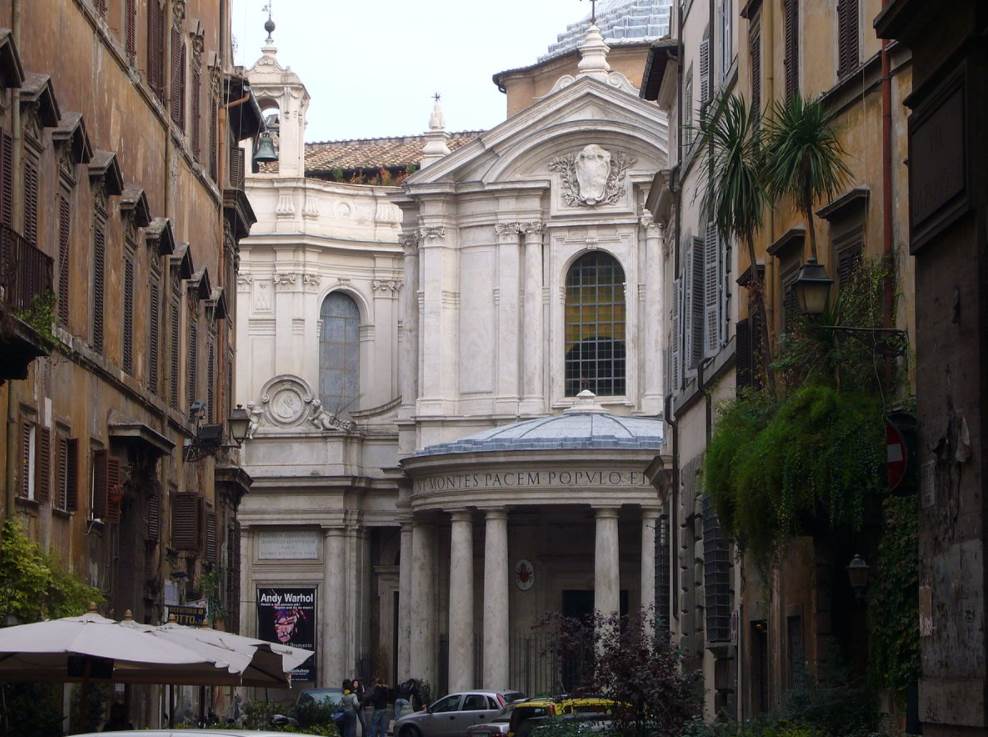
2. The Renaissance church was built because of a miracle in the 15th century
The central location of the church in Rome means that the area was already occupied by a much older structure that was known as the Sant’Andrea de Aquarizariis. The name of this church, “Aquarizariis,” means “of the water carriers, which means it was dedicated to the water supply in the city.
A new church on this location was commissioned by Pope Sixtus IV (1414-1484), a controversial figure who was born Francesco della Rovere. The Renaissance building was completed in 1482 and was built on top of the pre-existing church.
The reason why the Pope commissioned the church was because of a miracle that happened here. An image of the Madonna presumably started bleeding here in 1480, resulting in the church being erected just 2 years later.
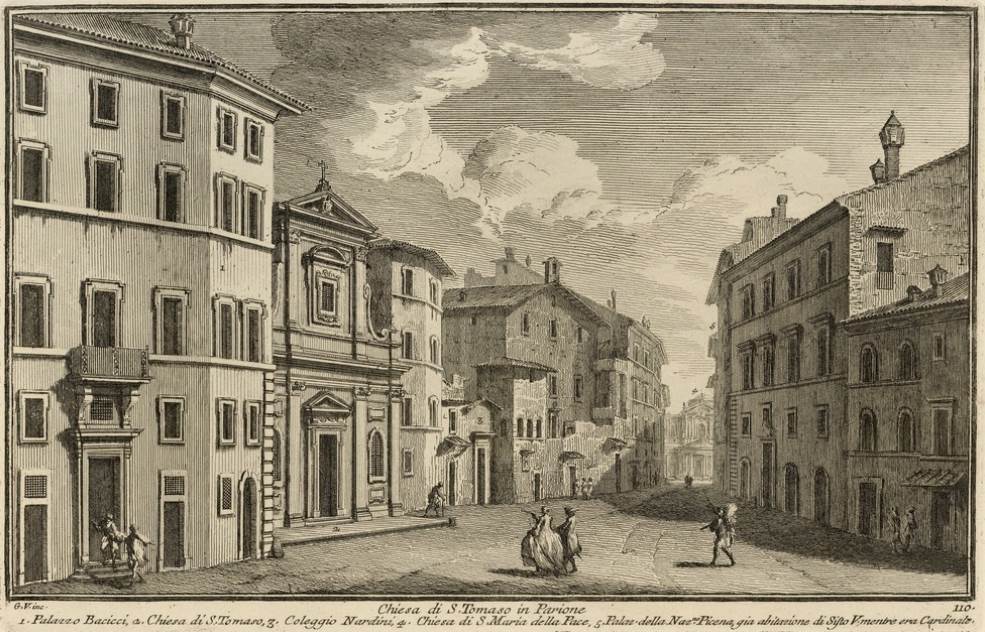
3. The High Altar was designed by a renowned Baroque architect
One of the most amazing features inside the church is the shrine dedicated to the presumed bleeding Madonna and Child. This venerated icon is placed inside the high altar of the church.
The high altar of Santa Maria della Pace was designed by Baroque architect Carlo Maderno (1556-1629), a man sometimes described as the founding father of Baroque architecture.
This is remarkable because he only designed one building from the ground up, Santa Maria della Vittoria, a church overshadowed by the presence of Gian Lorenzo Bernini’s sculpture called “Ecstasy of St Teresa” in one of its chapels.
The high altar of the church in the main chapel in which the image of the Madonna and Child was placed was completed in 1614.
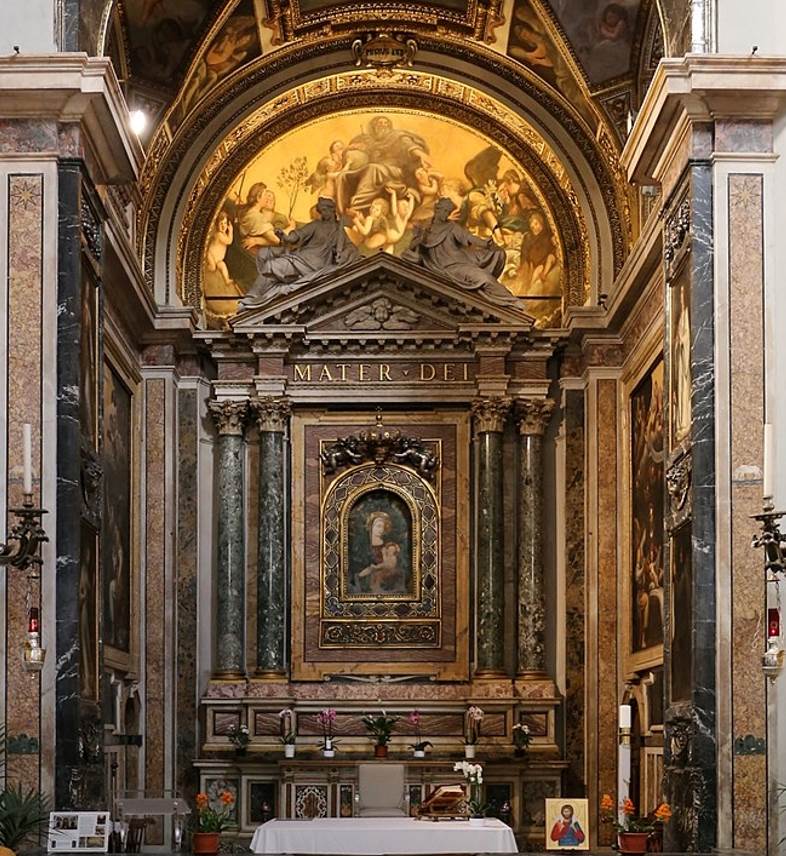
4. The church got its current appearance in the 17th century
The humble and geometric Renaissance structure was completely redesigned between 1656 and 1667 in the exuberant Baroque architectural style. This project was completed by Pietro de Cortona (1597-1669), one of the leading Baroque artists and architects at the time.
This project was commissioned by Pope Alexander VII (1599-1667), a man born Fabio Chigi and a member of the important Chigi family. This family was originally from Siena and rose in prominence in Rome during the High Renaissance as bankers with close connections to Pope Julius II, the famous patron of numerous Renaissance artists.
The interior was redesigned and the distinctive Baroque façade featuring a circular portico supported by Tuscan columns was added during this period. The portico protrudes into the tiny square in front of the church, a remarkable feat of architecture.

5. The church is adjoined by the magnificent Bramante Cloister
The church has a rather simple cruciform design that leads up to a space covered by an octagonal dome. The building is adjoined by a much larger monastery complex just to its north.
The most amazing feature of the monastery complex is the so-called “Bramante Cloister,” one of the ultimate masterpieces by Renaissance architect Donato Bramante (1444-1514), a man who introduced High Renaissance architecture to Rome.
This magnificent structure has two levels, both of which feature pilasters set to an arcade. The upper level also features columns in the middle of each span.
The design is amazing and was completed between 1501 and 1504. It was the first structure designed by Bramante in Rome following his move from Milan. He eventually became the first architect of St Peter’s Basilica, a building that ended up becoming the largest church in the world.
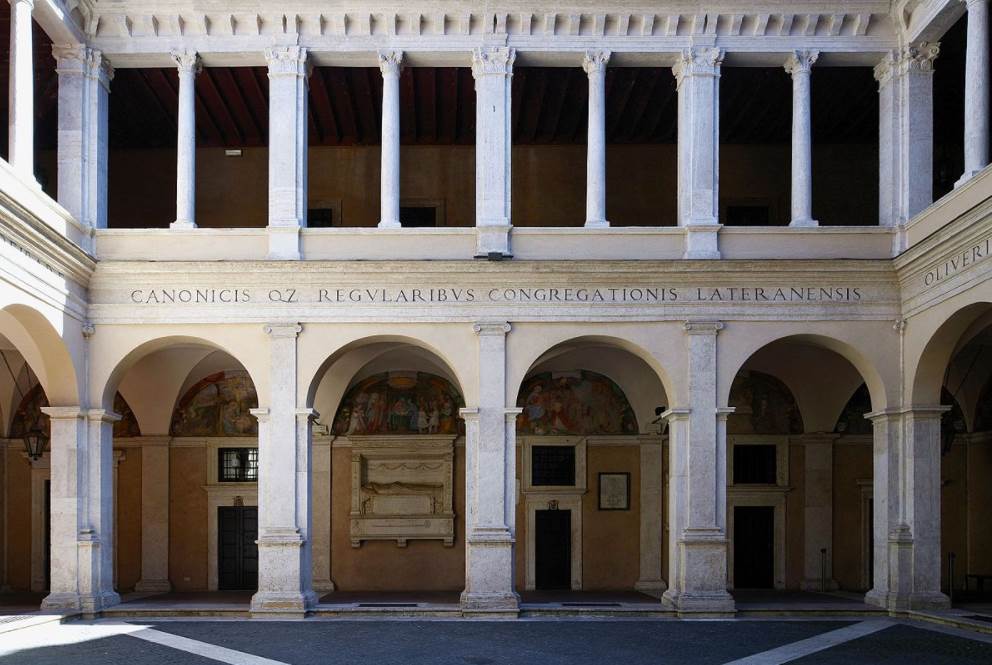
More interesting facts about Santa Maria della Pace
6. It’s unknown who the first architect of the Renaissance building was. One of the people who have been suggested is Baccio Pontelli (1450-1492), the architect of the Sistine Chapel in Vatican City.
7. The redesign of Santa Maria della Pace was a serious endeavor. The façade of the church almost completely covers the small trapezoid square in front of it, making it appear much larger than it really is.
In order to design the church in such a way, a number of houses that were located in this area had to be demolished in the 1650s. The shape of the portico was chosen to make it easy for Roman aristocrats to arrive here in coaches, a popular means of transportation in the city back then.
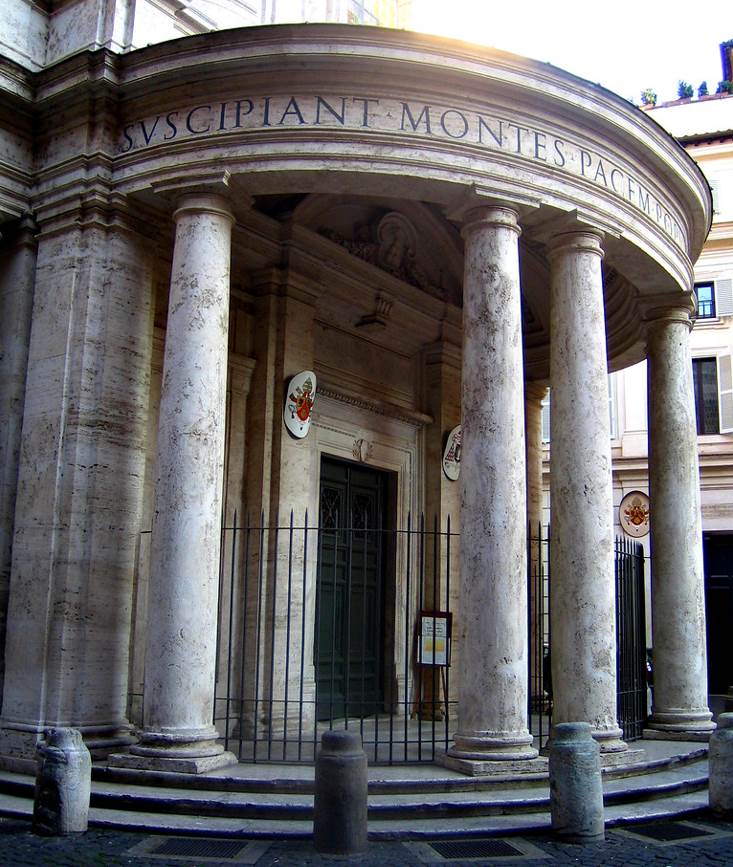
8. The inscription on the porch of the church as added at the request of Pope Alexander VII, a prominent member of the Chigi family. It was derived from Psalm 72 and reads:
SUSCIPIANT MONTES PACEM POPULO ET COLLES IUSTITIAM
This translates to “The mountains shall bring peace to the people; and the hills, justice.” This is a reference to the mountains depicted on the coat of arms of the Chigi family.
9. The High altar was designed by Carlo Maderno, the man who designed the Baroque façade of St Peter’s Basilica. This means that both the original architect of the massive church and the man who designed its façade about a century later had a hand in Santa Maria della Pace.
10. The interior of the church features a number of chapels constructed during the Renaissance. These include the Cesi Chapel, the Ponzetti Chapel, and the Chigi Chapel.
All these chapels are beautifully decorated but as expected, the Chigi Chapel tops them all. The main reason is because it features a fresco painted by Raffaello Sanzio (1483-1520), the superstar of the High Renaissance.
This fresco was commissioned by banker Agostino Chigi and completed in 1514. It is called “Sibyls” or “Sybils receiving instruction from Angels” and is one of the masterpieces of Raphael.

